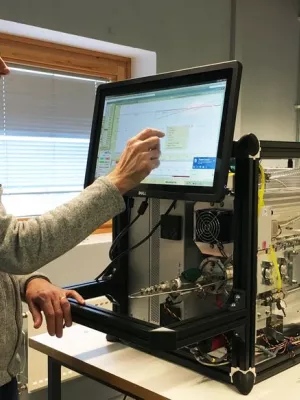
Erik Swietlicki
Professor

Can Marine Micro-organisms Influence Melting of the Arctic Pack Ice?
Författare
Summary, in English
The Arctic Ocean Expedition of 2001 (AOE-2001) to the central Arctic mostly north of latitude 85°N was conducted to study marine life forms and their products in water and ice, how their products may get into the air, the evolution of the particles produced, and their growth up to sizes large enough for activation into clouds. The expedition also investigated whether these naturally generated particles and clouds constitute a positive or negative climate feedback upon temperature forcing, as schematically shown in Figure 1. Indeed, biological activity of the open lead surface micro-layer was found to strongly influence particle production over the pack ice region, and this would influence cloud properties there. Similar processes transferring particulates from the surface micro-layer to the air—bubble bursting—should be operative over the world's oceans. So, can marine micro-organisms influence the melting of the Arctic pack ice? The answer must be yes, but to determine whether that influence is significant or not, we have to contend with many unknown factors. For example, will biological activity and airborne particle production increase or decrease with melting of the pack ice, and will resultant changes in warmer oceans oppose or reinforce the Arctic changes? Will cloud cover and the feeble mixing between surface and higher air remain unchanged? To have identified a possible influence on climate change is important, but assessing the extent of that influence will be a far harder problem.
Avdelning/ar
- Kärnfysik
Publiceringsår
2004
Språk
Engelska
Sidor
25-25
Publikation/Tidskrift/Serie
EOS, TRANSACTIONS AMERICAN GEOPHYSICAL UNION
Volym
85
Issue
3
Dokumenttyp
Artikel i tidskrift
Förlag
American Geophysical Union (AGU)
Ämne
- Subatomic Physics
Status
Published
Forskningsgrupp
- Aerosol, Nuclear Physics